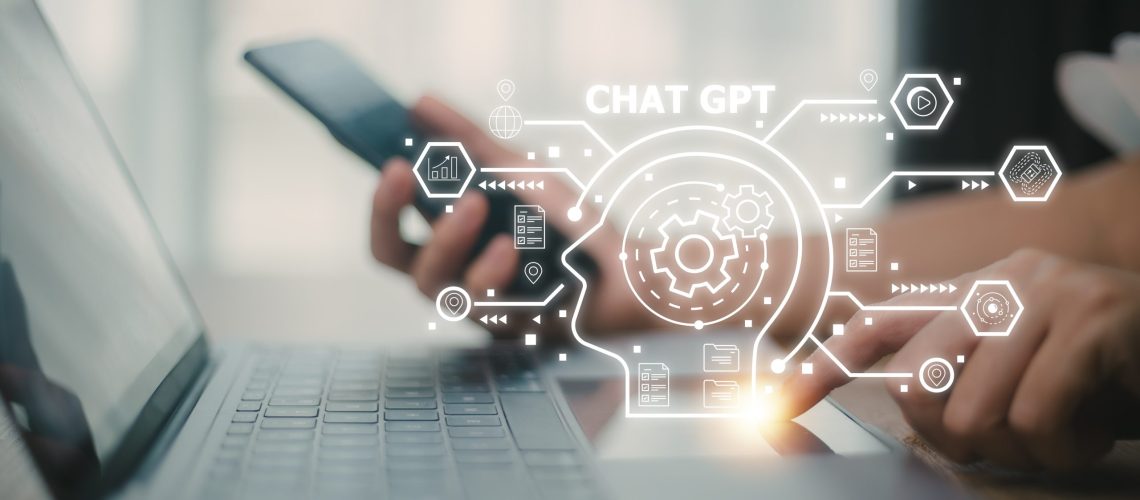ChatGPT is a type of language model that utilises advanced machine learning techniques to understand and generate human-like text. It is based on the GPT (Generative Pre-trained Transformer) architecture and has been trained on a large dataset of conversational text. ChatGPT is designed to be fine-tuned for a variety of conversational AI tasks, such as question answering, dialogue generation, and text completion.
This allows it to understand context and generate responses that are more natural and human-like. ChatGPT is a powerful tool for creating conversational AI systems, as it can be easily integrated into existing applications and platforms. It’s important to note that ChatGPT is a neutral tool, it can be used for both legitimate and malicious purpose, it’s up to the user and how they use it.
A simple use-case in using ChatGPT :
We can logon to Chat GPT and we can type in, give me a 750 word video script on the what ChatGPT can do in Cyber Security without plagiarism. I can take that script and load it into another site which can give me a realistic voiceover, then we can put it into another site and say give me video roll (deep fake) and then we have a video that we can load into YouTube, that’s it.
ChatGPT in Cyber Security :
ChatGPT (AI) has become an increasingly important tool in the field of cyber security. AI-based systems can help to detect and prevent cyber-attacks by analysing large amounts of data, identifying patterns and anomalies, and making predictions about potential threats. One of the key ways in which AI is used in cyber security is through the development of machine learning algorithms. These algorithms can be trained to recognise patterns in network traffic, identify potential vulnerabilities, and detect intrusions. They can also be used to analyse log files, email, and other forms of digital communication to identify suspicious activity.
Another area in which AI is being used in cyber security is in the automation of incident response. AI-based systems can quickly and accurately identify the scope and nature of a cyber-attack, and can automatically respond by shutting down affected systems, quarantining compromised data, and alerting security teams. AI also plays a crucial role in the field of threat intelligence. AI-based systems can analyse large amounts of data from various sources, such as social media and the dark web, to identify emerging threats and potential attack vectors. This can help organisations to proactively protect themselves from cyber-attacks.
Few Dis-Advantages of ChatGPT in Cyber Security:
- Threat actors can use ChatGPT to generate malicious code – As ChatGPT is able to generate highly coherent and contextually appropriate text, it could also be used to generate malicious code that is difficult to detect. This could make it easier for threat actors to create and distribute malware and other types of malicious code.
- ChatGPT can write enhanced phishing emails – As ChatGPT is able to generate text that is highly coherent and contextually appropriate, it could also be used to write highly convincing phishing emails. This could make it more difficult for individuals and organisations to detect and prevent phishing attacks.
- Anyone can be a scammer/threat actor – As ChatGPT is a publicly available tool, anyone can use it to generate malicious text. This means that even non-technical individuals could potentially use ChatGPT to carry out cyber-attacks.
- Script kiddies will be empowered – Script kiddies are individuals who use pre-existing scripts or tools to carry out cyber-attacks without a deep understanding of the underlying technology. The accessibility of ChatGPT could make it easier for script kiddies to generate malicious code, increasing the number of cyber-attacks.
Few Advantages of ChatGPT in Cyber Security :
- Assist in identifying and assessing any potential risks by analysing the network logs and security alerts, to identify patterns and anomalies.
- Generate mitigation plans by providing automated responses (recommendations) to identified risks.
- Comply with regulations such as HIPAA and PCI-DSS by generating compliance reports and identifying potential compliance violations.
- Monitor potential risks in real time by monitoring and analysing network traffic, log files, and security alerts.
- Understand business processes and the business impact of a potential cyber incident on their operations and revenue.
- Assist in communicating risks and risk management decisions to stakeholders, such as employees and investors, by generating notifications.
- For organisations using zero trust policy to protect their data, AI and ML are indispensable of their cyber security network.
Conclusion :
It’s important to note that AI is not a silver bullet for cyber security, and it’s important to have a multi-layered approach to protect against cyber threats, including AI, regular updates and patches, employee education, and incident response planning. By automating certain processes and analysing large amounts of data, AI-based systems can help to detect and prevent cyber-attacks, as well as enhance incident response and threat intelligence capabilities



